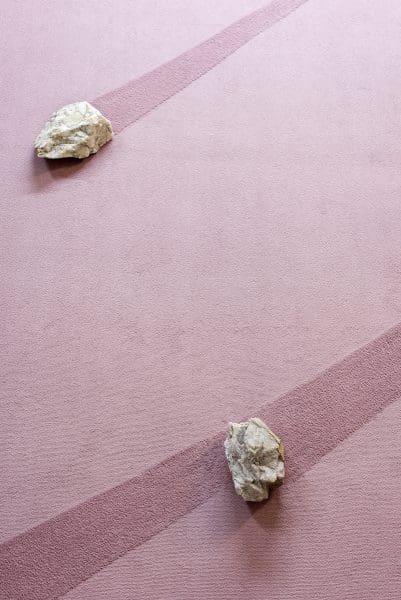
Material curiosities: Primavera 2025
In its 34th year, Primavera—the Museum of Contemporary Art Australia’s annual survey of Australian artists 35 and under—might be about to age out of itself, but with age it seems, comes wisdom and perspective.
It’s 10:30am in Berlin and Catherine Evans is drinking her second cup of coffee. The Canberra-raised, Victorian College of the Arts honours graduate chats genially about the logistics of maintaining an arts practice in two countries. There is, she says, a “great sense of collegiality and community between expat artists” in Berlin.
Evans first came to Berlin on residency in 2014. Her return to Melbourne was mired in uncertainty – a part- time job at Melbourne University wrapped up, the lease on her Footscray studio ended, as did the lease on her share house. “Everything was changing. I thought I might as well try to start again overseas.” That is not to say that she doesn’t value her Australian network of mentors and audience that was forged at art school however.
She will be heading back here at the start of this year to take her place among the State Library’s stacks as the winner of the Georges Mora Fellowship. The Fellowship provides artists with an office, grant money and access to research assistants at the library – in 2013/14 joint recipients Brook Andrew and Trent Walter dived into the photo archives with their project Dual/Duel.
In 1824 the duo trekked up the 800 metre tall mountain north of Melbourne. Anticlimactically and (disappointingly) the view out to Port Phillip Bay was found to be obscured by trees. “I want to go and stay there and take my own view,” she says. Realising the limitations on the view of 19th century white men, Evans also wants to hear from Indigenous custodians on the significance of the site.
“I am reading a bit about post-colonialism at the moment and came across this quote, ‘Truth is just a metaphor that we have forgotten is a metaphor.’ [Nietzsche].
“It reminds me that truth is always subjective. And then so are histories, of course not at all a new idea, but it resonates with me when I set myself the task of pulling apart a history and materials to create a new artwork. In a way histories are just another material to be examined.”

Rocks have long been a material that she’s collected and used in her installations and the geological formations of the surrounding region will no doubt inform her work. In Irrstern, 2017, she combined rough-cut quartz crystals collected from a forest near a mine in southwest Poland and glorious pink carpet in a large-scale wall work installation. Carpet and rocks are materials that we are accustomed to experiencing underfoot. Here they are thrown up in an improbable constellation – soft and hard, blushing pink and stern brown. The rocks have comet tails – drawn on by simply changing the direction of the fibres of the carpet.
Evans, though reluctant to go into detail without beginning her research, envisions a similar installation for the Mount Disappointment project.
One imagines that the library will be somewhat of a haven for the bookish Evans. Prior to art, she studied both science and Asian Studies – learning Hindi – at Australian National University. Hooked on drawing as a child, she took night classes in art before finding the (self-confessed) confidence to do what she really wanted to. At the VCA she majored in photography and still approaches her work in those shoes – with a strong consideration of composition and light. Photography is also a tool for documenting and a branch of inquiry for the artist.
After completing her honours Evans received a graduate mentorship with multidisciplinary artist Susan Jacobs. “Susan said to me, stop always searching for things to make art with, look at the things around you critically – what they are made of and how you can use them.” The lesson was to find the point of interest in a work or an experiment and amplify it. Since then, Evans has used everyday materials such as carpet and sticky tape. The trick is, she says is “to reinvent them in a way that is entirely unexpected.”
“In my studio I have rocks, bones and pink straws that I have collected. These are connected to a geographical location and history, I use these objects as an anchor into a bigger picture.”
Catherine Evans is the 2017 recipient of the Georges Mora Fellowship.